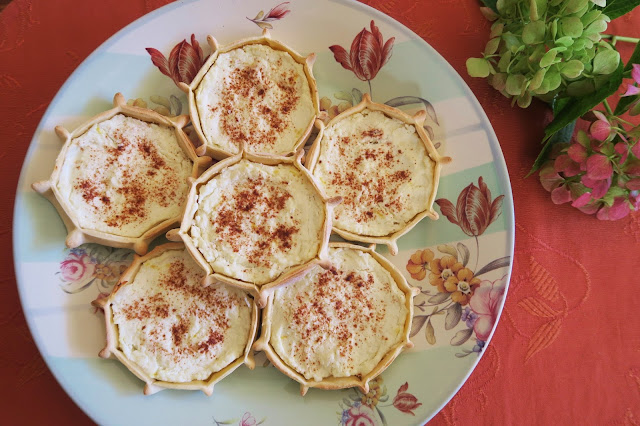It has been two days since we have returned from a very relaxing and memorable trip to beautiful Sanur, Bali. Sanur and Ubud are two great places to visit providing a friendly cultural and culinary experience. We met so many lovely locals who showed us around and gave us so much of their time, knowledge and most of all their warmth. We left feeling enriched, relaxed and at peace. Sanur became a geographical point for me and one of my blogging friends Daniela (aka @la_danigourmet) to finally meet and get to know a bit more about each other. I could not have asked for a better way to end our stay in this small paradise.
I am certain Daniela will be sharing her culinary experiences on her return, so make sure you follow her gourmet travels here. Although I enjoyed exploring a very different cuisine and eating out every day, I realized how much I missed cooking at home. It appears I also missed the picking of my parents apricots which occurs during the first two weeks of January. I say there is nothing better than a freshly picked apricot straight from the tree. I have to admit, I am quite fussy when it comes to this fruit. I don't like them over-ripe, and I don't like them refrigerated. Once they fall into this category, I turn them into jam. So a bowl of refrigerated apricots were waiting for me on our arrival home. Mamma kept them aside for me knowing how much I love making jam.
Papa`s apricot trees have all been grown from the stones of a very old (60 year old) apricot tree that now no longer exists. We grew up with this tree in our garden and I have very fond memories of sitting under it, occasionally picking one from the lowest branch and our cat racing up its old trunk to as far as it could go in order to keep the birds from eating the fruit. In the event a few would fall and I would collect them cheerfully. One of these young trees is now planted in my garden and to my delight, I picked its very first fruit this year. It will take another few years however before I can reap as many as my parents tree bears.
This apricot jam recipe belongs to Dorothy, my parents elderly neighbour who gave us a taste of her home made jam when I was a teenager. I remember her explaining the process of making jam and how she included the kernal, not only to add a nutty flavour, but to also help with the setting process.
Marmellata di Albicocche (Apricot Jam)
This simple and fail proof apricot jam has been adapted from my mothers elderly neighbour Dorothy who is now 94.
Ingredients:
1.5 kg apricots
1 cup water (exclude the water if the apricots are overly ripe)
juice of one lemon
1.5 kg sugar
Sterilise 10 clean medium sized jars along with their lids by placing them in a pot fully immersed under cold water. Bring the pot to the boil and then reduce the heat and allow to gently boil for 10 minutes. Carefully remove the jars from the pot, drain upside down on a clean tea-towel and dry thoroughly in an oven set at 150 C.
Wash the apricots, then halve or quarter them and remove stone. Crack open three of the stones and remove the kernels. Place the kernels in boiling water for ten seconds. Peel off the skin and split the kernels in half.
Mix the kernels with the apricots and place in a saucepan with the water and lemon juice. Cook over a low heat until soft. Please note that if the apricots are very ripe, you can omit the water and there is no need to cook the fruit down before adding the sugar.
Add the sugar and cook, stirring constantly over a low heat until the sugar is dissolved. Bring to a rapid boil and stir constantly until the setting point is reached (about 20 - 25 minutes). Ladle the jam into hot, sterilised jars and seal.
Dorothy would leave the kernels in with the jam infusing a nutty flavour. If you are using bought apricots, you can also added half a vanilla bean along with the sugar. I tend to leave it out as homegrown apricots have their own amazing flavour. This jam is delicious on bread but you can also make these little crostatine di albicocche.
Crostatine di Albicocche (Apricot Jam Tartlettes)
This pastry recipe has been adapted from Pellegrino Artusi's book: La Scienza in Cucina e L'Arte di Mangiar Bene. Recipe 589 - Pasta Frolla (Sweet Short Crust Pastry)
Artusi outlines three variations of this recipe, two of which use lard. Lard is pig fat that was commonly used in many cuisines as a cooking fat or shortening. My mother would use it in her tart bases and biscuits until now. I however, chose to follow the alternative recipe which uses butter.
Ingredients:
250 gm plain flour
125 gm butter
110 gm caster sugar
1 whole egg, plus 1 yolk
Cream the butter and sugar until the mixture is pale yellow. Add the eggs and then fold through the flour or if using modern appliances such as the Kitchen Aid, add the flour to the creamed base and pulse until combined. The secret is to not over mix the soft pastry and to chill before rolling out.
Roll out the chilled pastry to desired size and press pastry into a 12 cup cake tray. Add the apricot jam and decorate with remaining pastry. Bake in a moderate oven for 15 - 20 minutes or until golden. Allow to cool before removing them from the tray. Dust with icing sugar before serving.
Enjoy!







Comments
Post a Comment